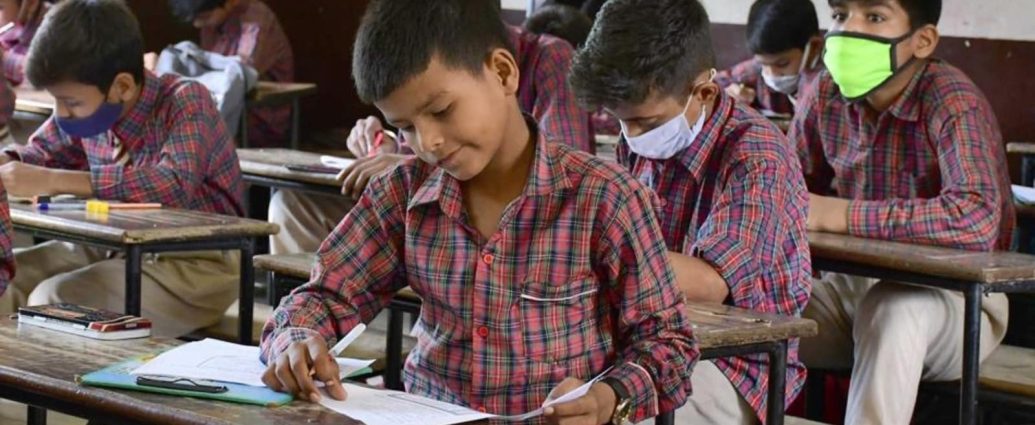In India, the enrollment of students in government schools have increased significantly in the past few years, the latest edition of Annual Status of Education Report (ASER 2022) shows.
As many as 72.9 per cent of the surveyed students go to government schools, it said. The report also highlights an increase in the number of private tuition takers.
The 2022 edition of the survey – done at a national level after 4 years due to the COVID-19 pandemic – reached 616 districts and 19,060 villages, covering 3,74,544 households and 6,99,597 children in the age group of 3 to 16 years, Pratham Education Foundation, who did the survey and prepared the report, said on Wednesday.
Enrollment in government schools have increased significantly since 2018 – when a regular nationwide survey was done by the organisation last time – as per the report. In 2018, the number stood at 65.6 per cent.
“The period 2006 to 2014 saw a steady decrease in the proportion of children (aged 6 to 14) enrolled in government school. In 2014, this figure stood at 64.9% and did not change much over the following four years. However, the proportion of children (age 6 to 14) enrolled in government school increased sharply from 65.6% in 2018 to 72.9% in 2022. Increase in government school enrollment is visible in almost every state in the country,” the report states.
On the contrary, the number of students taking private tuition classes has increased. As per the ASER 2022 report, the percentage of Class 1-8 students taking tuition classes is at 30.5% in 2022, compared to 26.4% in 2018.
“In Uttar Pradesh, Bihar, and Jharkhand, the proportion of children taking paid private tuition increased by 8 percentage points or more over 2018 levels,” the report highlighted.
More girls now going to school
The number of girls in the age group 11-14 years who do not go to schools has also decreased – 2% in 2022 compared to 4 % in 2018. “This figure is around 4% only in Uttar Pradesh and is lower in all other states,” as per ASER 2022.
The decrease in the proportion of girls not enrolled in school is even sharper among older girls in the 15-16 age group. In 2008, nationally, more than 20% of girls in the 15-16 age group were not enrolled in school. Ten years later, in 2018, this figure had decreased to 13.5%. The proportion of 15-16-year-old girls not enrolled has continued to drop, standing at 7.9% in 2022,” the report claims.
In only three states, the number of girls not going to school is above 10% – Madhya Pradesh (17%), Uttar Pradesh (15%), and Chhattisgarh (11.2%), the report highlights.
Increase in enrollment, decrease in reading & arithmetic skills
Overall, in the age group of 6-14 years, the enrollment rate now stands at 98.4%, an increase from 97.2% in 2018. This is despite disruptions caused by the COVID-19 pandemic over the past years, according to the report.
While ASER 2022 shows increase in enrollment of students in schools nationwide, despite the pandemic, it also highlights that the basic reading and arithmetic ability have dropped in students.
“Nationally, children’s basic reading ability has dropped to pre-2012 levels, reversing the slow improvement achieved in the intervening years. Drops are visible in both government and private schools in most states, and for both boys and girls,” it states.
In both government and private schools, only 20.5% students of Class 3 can read, compared t 27.3% in 2018. “This decline is visible in every state,” the report claims.
Similarly, the proportion of Class 5 students who can read has dropped to 42.8% in 2022, compared to 50.5% in 2018. This decrease is smaller in the case of Class 8 students – 69.6% in 2022 compared to 73% in 2018.
To test reading ability among students, the surveyors assessed whether a child can read letters, words, a simple paragraph at Std I level of difficulty, or a “story” at Std II level of difficulty.
Children’s basic arithmetic levels have also declined compared to 2018. “The ASER arithmetic test assesses whether a child can recognise numbers from 1 to 9, recognise numbers from 11 to 99, do a 2-digit numerical subtraction problem with borrowing, or correctly solve a numerical division problem (3 digit by 1 digit),” as per the report.
The proportion at the national level now stands at 25.9% compared to 28.2% in 2018 in the case of Class 3 students; 25.6% compared to 27.9% in the case of Class 5 students.
